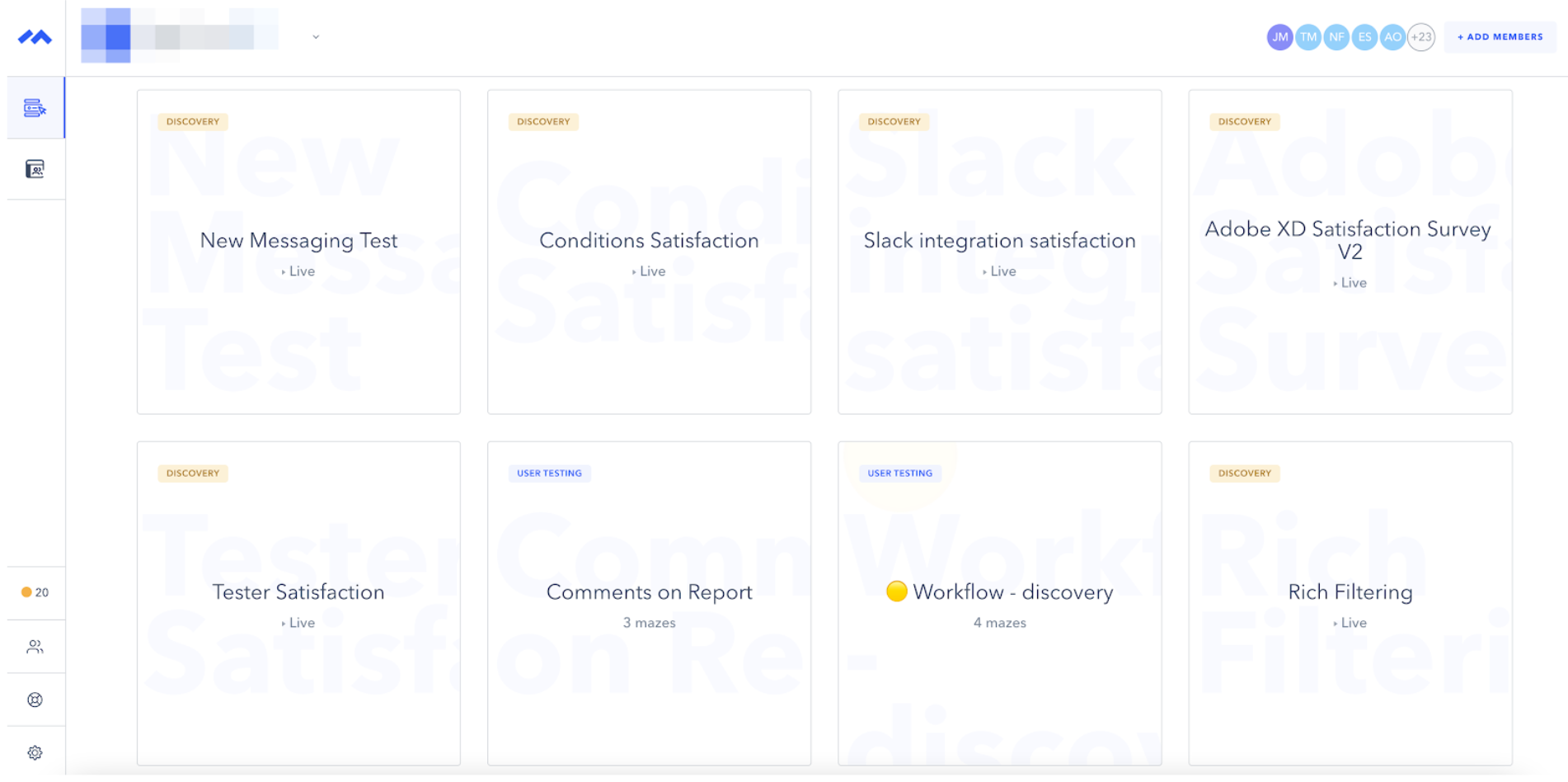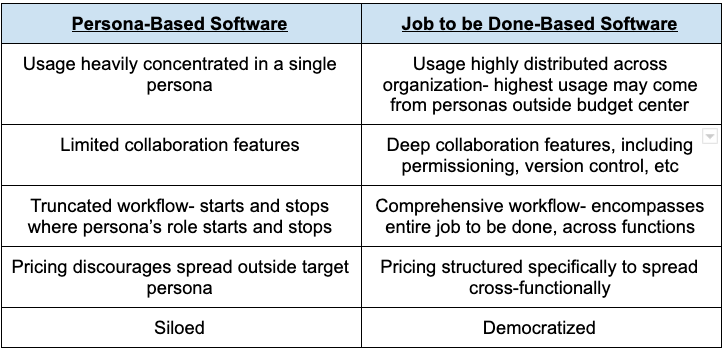Deep Collaboration Arrives
It’s hard to overstate the implications of the acquisition of Slack by Salesforce. I’ll leave the opining on the pros & cons of the M&A itself to the experts. But one thing is clear: combining the collaboration functionality of Slack with the sales productivity tooling of Salesforce represents a monumental step forward in the history of enterprise software.
At Emergence, we’ve been students of the cloud since our firm’s first investment, backing Salesforce in 2002. Ever since, we’ve exclusively focused on enterprise software, partnering with productivity leaders like Box and Veeva as well as collaboration leaders like Yammer and Zoom.
However, an unfortunate truth has emerged as the cloud has matured; collaboration software is increasingly at odds with productivity. As the number of apps in both categories has exploded, there’s been a huge uptick in data loss (and frustration) as workers pivot across apps to get their work done. It’s tough to stay in flow when you’re constantly forced out of it by your tools.
The Solution: Deep Collaboration
Collaboration and productivity tooling evolved separately. The move to remote or hybrid work is the catalyst we’ve needed to fuse them. We used to rely on collaboration tools for lighter weight tasks— updates, check-ins, gif sharing, etc.— and reserve deeper, more substantive collaboration for in-person meetings. The old stack (mostly) worked for that approach.
In a world where deeper collaboration is being done remotely, we need a new stack. Collaboration tooling can’t be a destination. It must be embedded in the work itself.
We call this stack Deep Collaboration. It refers to software which combines productivity and collaboration functionality in one place to get a specific job done. In a Deep Collaboration future, all the people involved in getting a job done can collaborate on doing it in one piece of software. All the productivity and collaboration (both internal and external) features they need to accomplish the job live in the same place.
Deep Collaboration refers to software which combines productivity and collaboration in one place to get a specific job done.
Figma is perhaps the most successful Deep Collaboration startup at this point, providing a single place for everyone involved in design to contribute and collaborate (see below for more).
But the Salesforce/Slack combo brings Deep Collaboration to the big leagues for the first time. Embedding Slack within Salesforce could change the way teams sell. Today, many of our portfolio companies’ sales teams create internal Slack channels to collaborate on each deal. Increasingly, they’re also creating external Slack Connect channels to collaborate with customers post-sale. But they’re tracking and forecasting these deals in Salesforce. This information and task fragmentation can slow sales cycles, make deals harder to forecast, and cause sales rep burnout.
What about Google Docs? Isn’t that Deep Collaboration?
No. Microsoft and Google have added great collaboration features to their productivity suites over the years. However, both are generic, non-job specific platforms. As such, they’re limited in their ability to be the one place a specific job gets done. And thus in their ability to mitigate data loss and “command-tab” driven frustration.
Take legal contracting, for example. MSFT Word and Google Docs allow you to redline and comment on contracts. However, they lack deep, job-specific productivity workflows, like permissioning and approvals, which are necessary to complete the task of negotiating and approving a contract. Deep Collaboration companies like Ironclad (an Emergence portfolio company) aspire to be a one stop shop. By adding contracting workflows and internal and external collaboration features around Word’s text editor, Ironclad ensures their users don’t have to break their flow and move to Slack, calls, etc to finish their job.
Another area ripe for Deep Collaboration software would be forecasting, planning and analysis (FP&A), a critical finance function that is highly dependent on gathering data from, and then sharing analysis back with, functions across an organization. Finance folks today rely on Excel and Google Sheets but these generic tools lack FP&A-specific features like version control, granular permissioning, and planning modules needed to effectively collaborate. Fortunately, there’s a promising crop of Deep Collaboration companies including Workstream, Layer, Mosaic, Cube, Basis and more being built to tackle this challenge.
Focus on the Job to be Done. Not the Persona.
One of the most exciting elements of successful Deep Collaboration companies is that they unlock substantive cross-functional collaboration because everyone can be close to the work itself.
That’s because Deep Collaboration companies focus not on building for a specific persona (e.g., sales person, designer, etc), but instead on building for a specific job to be done. Most high value jobs to be done involve people from a variety of departments. This new stack allows them to work together in deeper ways.
Deep Collaboration companies focus not on building for a specific persona but instead for a specific job to be done.
This is a major departure from how software has traditionally been built. Salesforce, for example, was built to serve sales people, with a UI and data architecture focused on this persona. But the job to be done of selling is an inherently cross-functional task. Marketers are involved in landing the lead and creating deal collateral. Engineers are involved in demo creation and potentially configuration. Product managers are constantly seeking feedback from prospects. The Slack acquisition, if integrated well, could allow for collaboration and data sharing across these functions, helping Salesforce graduate from the old persona-based paradigm.
As mentioned, a great example of a Deep Collaboration company executing on this new paradigm beautifully is Figma in the design world. In the old paradigm, designers were effectively the only persona involved. They’d download expensive software from the Adobe Suite, edit files, and then save versions of these files to Dropbox and send links to other designers. They may also have Slacked/emailed/etc comments about their design alongside the file. Unsurprisingly, this approach led to version issues, lots of metadata loss, and very little involvement from personas outside the design team.
Figma turned this on its head, democratizing the design process. They built the design suite as well as the collaboration suite natively in the browser, leveraging technology like WebGL to make it feel seamless to design together. They also priced it to ensure spread across an organization, distinguishing between paid editor seats and free viewer seats. As a result, Figma is the place where each persona involved in product design, from product managers to engineers to marketers to designers, goes to collaborate. It’s quickly becoming the place the job of design gets done (though their competitors have taken heed and are moving to this paradigm as well).

Another great, earlier stage example of the cross-functional benefits of Deep Collaboration is Maze. Maze is focused on the job to be done of product research. In the persona-focused paradigm, this is a siloed task in which each relevant function uses its own tools, without much in the way of collaboration. Product managers use tools like SurveyMonkey to gather input on feature ideas. User researchers interview people interacting with product prototypes. Marketers use tools like Optimizely to test copy performance (often after the product investments had already been made). This results in a disjointed process, siloing key insights within functions and making for suboptimal products.

Maze is focused on bringing all the tooling needed for product research into one place. It makes large-scale prototype testing dead simple, enhances traditional surveying tools with product-specific functionality, and allows for copy testing before a product goes live. Perhaps most important of all, Maze allows each persona to view and collaborate on the results of their research. As a result, each point of decision in the product creation process is tested and reviewed by the whole team, creating strong alignment and cross-departmental accountability.

A core question to evaluate the efficacy of Deep Collaboration software is this: What portion of the job to be done in fact gets done within the software? In other words, how much app switching must occur to get the job done? How much data loss is there? The most successful companies of this next era will become the room where it happens.
Deep Collaboration in Context
Over time, productivity software has gotten progressively more tailored to the end user. And thus better. The early CRM vendors took a generic database and tailored it to sales users. Industry cloud companies like Veeva took that generic sales CRM and tailored it to specific industry personas. Machine learning-enabled software tailors recommendations to specific personas in specific contexts (we call this Coaching Networks).
Collaboration software is overdue to follow suit. Zoom is already moving in this direction with the launch of Zoom Apps, which join use case-specific productivity with Zoom’s native collaboration functionality. With the Slack/Salesforce mashup, the Deep Collaboration future is arriving a bit faster.
An earlier version of this post was featured in VentureBeat.
Enjoying this article?
Sign up to gain access to our thought leadership and have future articles delivered directly to your email.